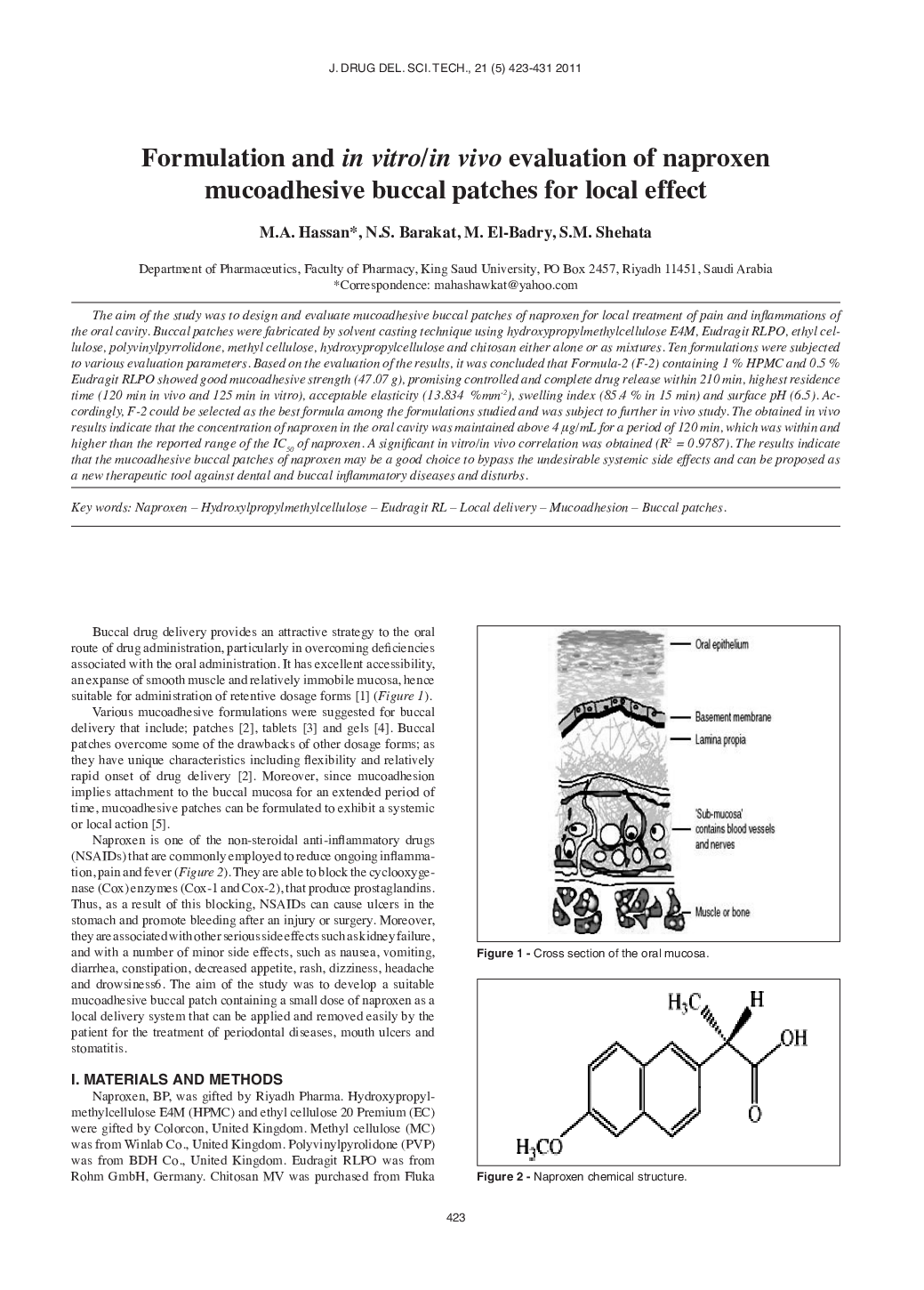| کد مقاله | کد نشریه | سال انتشار | مقاله انگلیسی | نسخه تمام متن |
|---|---|---|---|---|
| 2483329 | 1114217 | 2011 | 9 صفحه PDF | دانلود رایگان |

The aim of the study was to design and evaluate mucoadhesive buccal patches of naproxen for local treatment of pain and inflammations of the oral cavity. Buccal patches were fabricated by solvent casting technique using hydroxypropylmethylcellulose E4M, Eudragit RLPO, ethyl cellulose, polyvinylpyrrolidone, methyl cellulose, hydroxypropylcellulose and chitosan either alone or as mixtures. Ten formulations were subjected to various evaluation parameters. Based on the evaluation of the results, it was concluded that Formula-2 (F-2) containing 1 % HPMC and 0.5 % Eudragit RLPO showed good mucoadhesive strength (47.07 g), promising controlled and complete drug release within 210 min, highest residence time (120 min in vivo and 125 min in vitro), acceptable elasticity (13.834 %mm- 2), swelling index (85.4 % in 15 min) and surface pH (6.5). Accordingly, F-2 could be selected as the best formula among the formulations studied and was subject to further in vivo study. The obtained in vivo results indicate that the concentration of naproxen in the oral cavity was maintained above 4 μg/mL for a period of 120 min, which was within and higher than the reported range of the IC50 of naproxen. A significant in vitro/in vivo correlation was obtained (R2 = 0.9787). The results indicate that the mucoadhesive buccal patches of naproxen may be a good choice to bypass the undesirable systemic side effects and can be proposed as a new therapeutic tool against dental and buccal inflammatory diseases and disturbs.
Journal: Journal of Drug Delivery Science and Technology - Volume 21, Issue 5, 2011, Pages 423-431